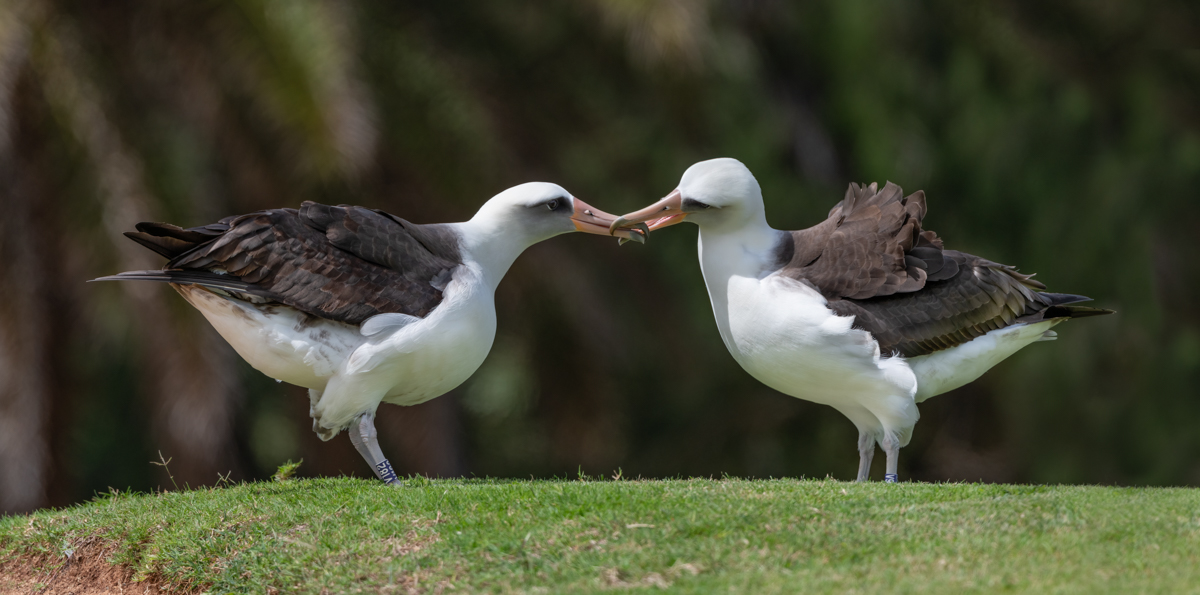
A blog by Nathan Goldberg
When people hear the word “albatross”, many associate the word with its direct meaning as “something that causes persistent deep concern or anxiety” or “something that greatly hinders accomplishment” (Merriam-Webster 2022). That definition helps us understand the idiom “having an albatross around one’s neck” and draws even more undesirable parallels around the word.
However, to birdwatchers and bird photographers alike, the word “albatross” is one of positive association, and one of wonder.
An albatross (in the biological sense) is a magnificent and immense bird of the open ocean, one that can fly for thousands of miles without much effort, and a bird that has an incredibly large wingspan. In fact, the bird with the largest wingspan ever recorded is the Wandering Albatross, with wings spreading over 11 feet in length (National Geographic 2022)!
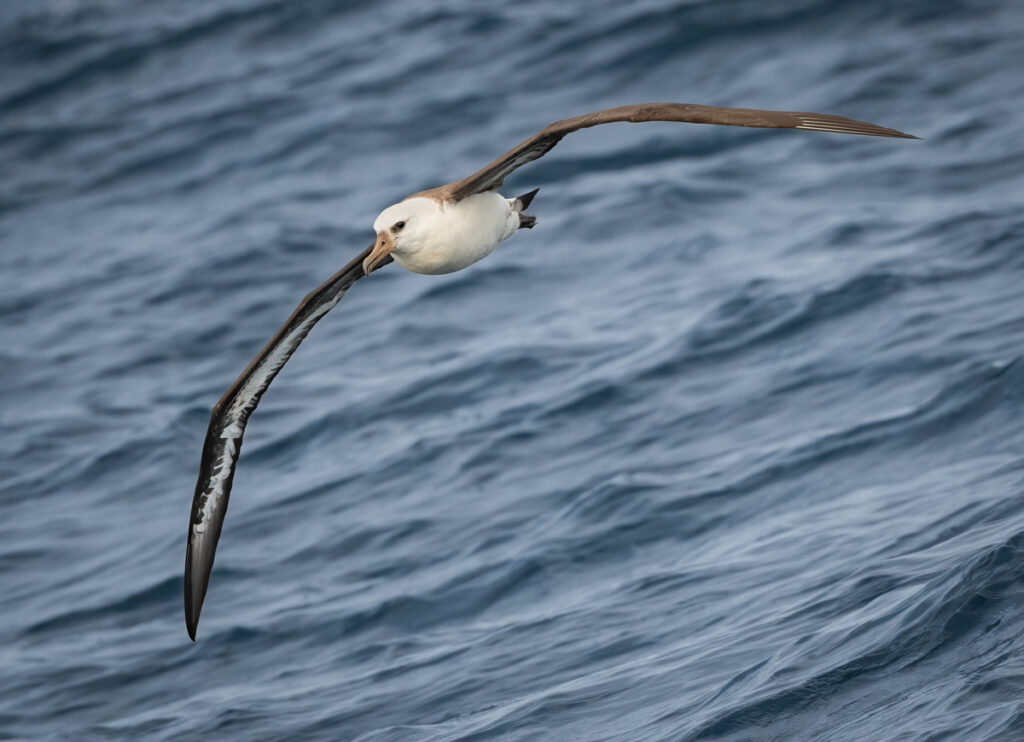
These birds are strictly pelagic, meaning they spend their lives almost entirely at sea – coming to land only to breed. They are long-lived and connect distant cultures that live at the corners of the earth. In Owen’s travels across the pacific region of the United States, he’s had the opportunity to encounter one of the three regularly occurring albatross species that call the north Pacific home – the Laysan Albatross. He’s seen them coursing alongside a boat offshore the Aleutian Islands of Alaska, had one beeline past us in a boat off of Half Moon Bay, California, and gotten to observe a pair of them courting one another on land on the Hawaiian Islands of O’ahu and Kaua’i.

Laysan Albatross form a special bond with one another and will remain paired with each other for their entire lives. They can go months without seeing their mate during the winter season, only to return to their same nesting areas each spring to find their partners. Prior to mating, they will “dance” with one another, through a synchrony of movements, as well as clack their bills against one another to establish their bond (American Bird Conservancy 2022). They will only lay one egg a year, so if the nest fails, that year of nesting is sadly over. Owen had the privilege of watching this pair of Laysan Albatross dance with one another on a golf course (of all places) on the island of O’ahu in Hawai’i this past March.
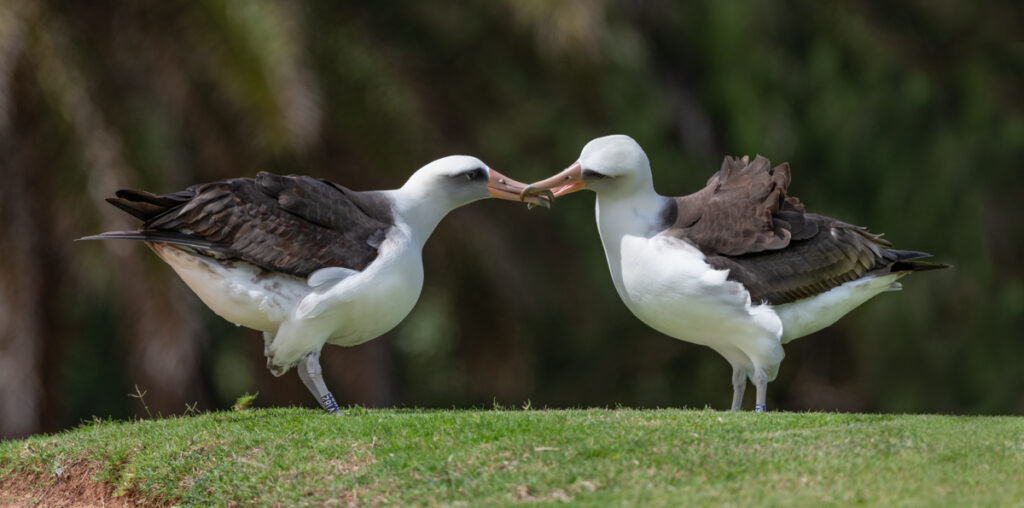
While at sea, albatross travel utilizing a flight-style known as “dynamic soaring”, meaning they swoop up and down in a semi-circular method to catch the wind and minimize the amount of flapping needed with their wings (Chu 2017). Through this method, these birds can cover thousands of miles in a short amount of time, and it is not uncommon to encounter a Laysan Albatross on a feeding foray from the Hawaiian Islands off the coast of California or Alaska.
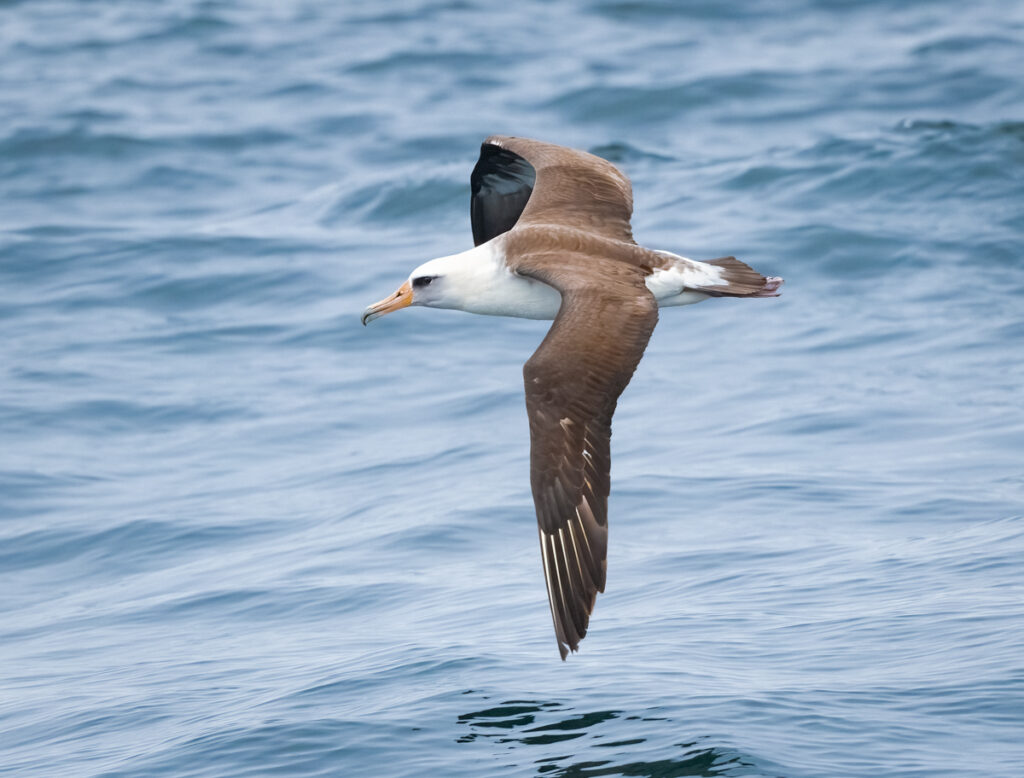
Studies into the feeding methods of albatross have shown they’re also largely nocturnal feeders, waiting for food to rise from the depths of the ocean in the night since there’s no sun. Scientists figured this out by looking at the eyes of albatross, and found that they contain a high concentration of a pigment called rhodopsin, which enhances night vision (American Bird Conservancy 2022).
Laysan and most other species of albatross have unfortunately been hit hard by a variety of ecological impacts. They are ground nesters and often unafraid of humans, so they made for easy pickings in the early 1900s feather industry (American Bird Conservancy 2022). Introduction of rodents and cats on their islands have been detrimental as well, as these new predators eat chicks while they’re in the nest and the parents have no defenses. Unfortunately, albatross are not safe at sea either – they are frequently caught by long-line and commercial trawling fishing operations, and regularly ingest plastics found at sea thought to be food.
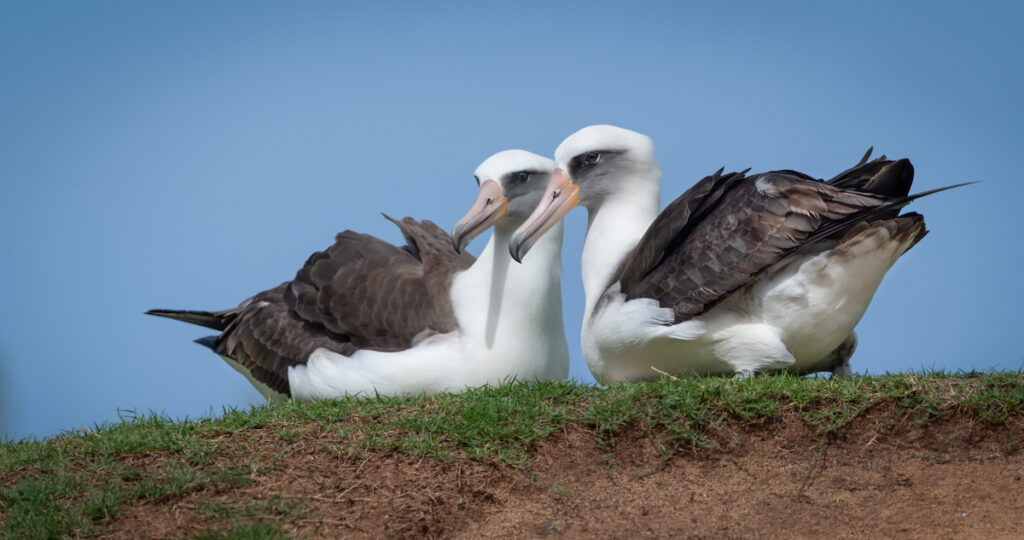
With those negative points in mind, many albatross species are benefiting from new protections, put in place over the last 50-100 years. The practice of feather harvesting has stopped, and many large-scale fishing operations have turned to safer methods of harvest that protect albatross. Predator eradication efforts are also underway or even completed on many islands that albatross nest on around the world. Presently, the American Bird Conservancy is working to restore nesting habitat on the Hawaiian island of Molokai for albatross and other seabirds by installing predator-proof fencing, one solution that can be used if all predators can’t be eradicated across an island.
Albatross are magnificent birds that deserve our protection, and Owen and I hope generations in the future get the opportunity to enjoy these magnificent birds at sea and on land for years to come.


